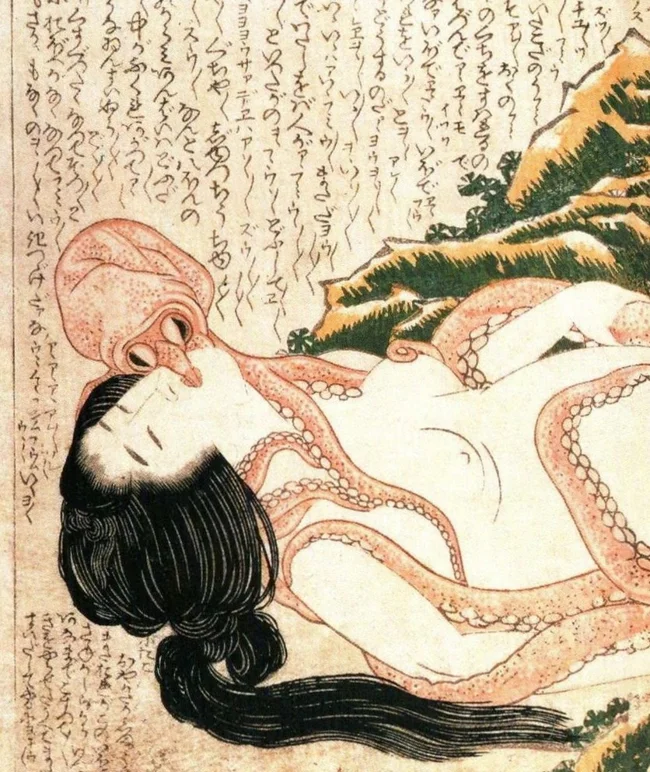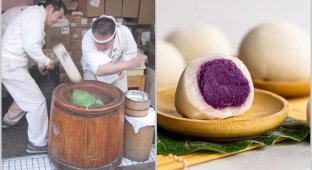Amazing Intimate Traditions of Ancient Japan (8 photos)
A very unique people. Photo source: Getty Images 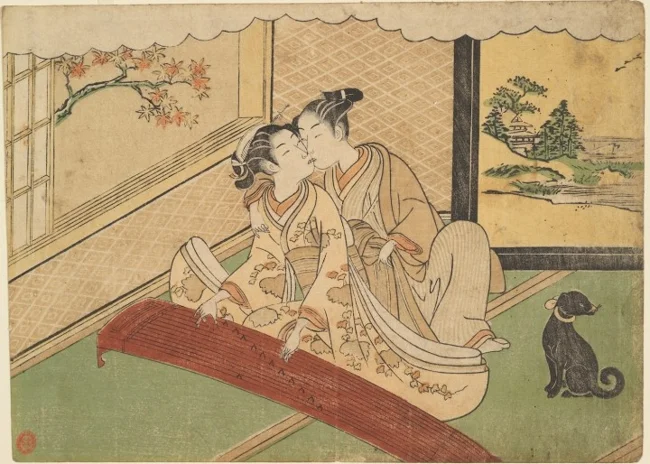
Geisha are just a small part of a rich history. Here are seven astonishing sexual practices that existed in the isolated Japanese society!
Dive into the erotic culture of the Land of the Rising Sun.
For a long time (the entire Edo period, when national identity was being formed), Japan was almost completely closed off from the outside world. The country did not trade with other countries, and foreigners had no access to Japanese society.
This isolation gave rise to unique customs and traditions, many of which concerned intimate matters. The only neighbor of interest to the Japanese was China. Incidentally, many astonishing Chinese sexual practices found their way into Japan.
So what went on in the bedrooms of the ancient Japanese?
Monks and Free Love
A tradition unimaginable to the European mind was widespread in Japan. Tantric teachings (sex as a path to enlightenment) came from India and China, and Zen Buddhist monks adapted them in their own way. They viewed sex as a completely natural and enjoyable activity, promoting peace of mind and health of body.
It's worth noting that most Japanese held a similar view. Paradoxically, however, this did not extend to marital relations (intimacy with a wife was purely practical). For pleasure, men used the services of numerous mistresses, as well as prostitutes of varying status.
Monks acted similarly. They often became regular clients of geishas and low-ranking prostitutes, and also established relationships with noblewomen.
The founder and educator of this tradition in the 15th century was the wandering Zen Buddhist monk Ikkyu Sojun, who was also a poet, artist, and tea ceremony master. Through his works, Ikkyu celebrated women and their magical effects on his own body. His teaching, "Red Thread Zen," is called a hymn to love, passion, and the flesh.
Guest Marriage as Everyday Life
During the Edo period, the Japanese had a very unique understanding of marriage. Despite the patriarchal and strict social structure, marriage was considered a purely formal agreement. There wasn't even a special marriage ceremony.
The bride's father and the groom's family simply agreed that the union of these two people was beneficial to their families. The future spouses were then informed, and they were expected to provide for the continuation of the family line. The woman didn't always move in with her husband; often she remained with her family or lived separately, with her husband visiting only occasionally.
Naturally, this arrangement was typical of the upper classes. Peasants, artisans, and merchants took their wives in and treated them as full-fledged workers.
Nevertheless, in both cases, divorce was very simple. The wife returned to her birth family or, if she had the means, settled separately and was free to lead a free life.
It was believed that in marriage, a woman should remain faithful (at least formally), while a man was given complete freedom to have any number of mistresses, girlfriends, geishas, and concubines. Moreover, illegitimate children often had the same rights as legitimate children.
Under such circumstances, a beautiful daughter, capable of becoming the future mistress of an influential man, was seen as a social elevator for the entire family. Geishas and kept women occupied quite high positions and even enjoyed respect, although their lives were often difficult.
Geisha Virginity: A Commodity for Auction. Sometimes More Than Once
Undoubtedly, the most famous erotic symbol of Japan today is the geisha—artistic companions who sold not so much intimacy as pleasure for the soul. Although sometimes their services included something more piquant.
Losing a geisha's virginity, mizuage, was considered the most important stage in her career. It was an initiation rite that determined her future position in society. It was the identity of the "patron" who was granted the mizuage privilege (her virginity was not simply sold, but put up for auction) that determined the future geisha's status.
Noble "patrons" competed for the most promising girls, and the stakes in this bidding were very high. This is described in detail in the famous book "Memoirs of a Geisha."
As in many cultures, virginity was highly valued in Japan. Chinese influence is also noticeable, where losing virginity was believed to grant a man longevity. Interestingly, the "patron" who performed the initiation never had any further relations with the girl.
Naturally, the auction wasn't organized by the girl herself, but by the mistress of the okiya—the house where the geisha lived. The money went to her, too. The most cunning "mama" managed to collect the payment for mizuage multiple times, resorting to tricks that simulated virginity.
A Complex Hierarchy Among Courtesans
The Japanese system of intimate services had one of the most complex structures in the world. As in many countries, brothels were legal, located in special "pleasure quarters," and divided into expensive and cheap. Common prostitutes were called yujo, meaning "play women." Famous beauties, however, were called oiran, "best flower," and enjoyed influence and honor.
Japanese pleasure quarters also employed men, wakashu, who served both women and men. For the latter, they might dress in women's clothing and wear makeup, a respected tradition dating back to kabuki theater.
Geisha were a special category. Literally translated, they mean "persons of art." Their main task was to provide cultured entertainment to wealthy guests at banquets with music, dance, elegant tea ceremonies, and witty, suggestive conversation. What happened afterward was considered the geisha's private business, though it was rewarded with expensive gifts.
In addition to the geisha themselves, okiyas housed young apprentices, maiko, whom clients were allowed to look at but were forbidden from gifting until the official initiation ceremony.
By the way, after the publication of "Memoirs of a Geisha," okiyas experienced a new wave of popularity in Japan. Naturally, exclusively in the context of tea ceremonies. So, maiko and geisha still exist and thrive today!
Erotic Prints as Amulets
Japanese erotic prints called shunga are considered no less famous among connoisseurs than geisha. This word translates as "spring pictures," since "spring" was one of the most popular metaphors for carnal love.
The most famous artists did not shy away from creating shunga. For example, Hokusai, the author of the famous "Great Wave off Kanagawa," also became famous for his erotic works.
This is a special genre of decorative art. Shunga artists were primarily inspired by love scenes set against the backdrop of interiors and landscapes. The characters were depicted with exaggerated genitalia. This style was borrowed from Chinese medical atlases, where organs important for study were also depicted with anatomical accuracy.
These prints were incredibly popular among the nobility. Over time, they also found their way into the homes of the middle class. However, since everything in Japan is done allegorically, a belief spread among merchants that shunga protected against fire. Thus, having a whole collection of such images at home was considered not only proper but also beneficial.
Furthermore, samurai, for example, believed that shunga had talismanic properties and often wore these images on their bodies.
A wide range of intimate accessories
From these same shunga prints, we learn many details about the intimate lives of the Japanese. For example, they were great fans of intricate sex toys during the Edo period.
No, they can hardly be called the inventors of dildos. However, it is a historical fact that in Japan these items were crafted with great skill from horn, shells, leather, wood, and even papier-mâché. Stone eggs for training intimate muscles and rings for maintaining erections were also popular.
Being in love with a partner was considered immoral.
Finally, about an interesting feature of Japanese morality. Sex with multiple partners, paid love, and same-sex love were considered absolutely normal. But passion for a single woman and the desire to live exclusively with her were condemned as a shameful weakness.
Yes, this sometimes happened, usually with geisha, whom their "patrons" took from the okiya. However, this meant social exile for both partners. Often, such a story ended in double suicide.
Love within marriage was also considered a strange and destructive emotion. To this day, there is no direct equivalent to the phrase "I love you" in the Japanese language. Public displays of affection in couples are taboo.
Perhaps this is why the Japanese seem so mysterious and reserved to us. 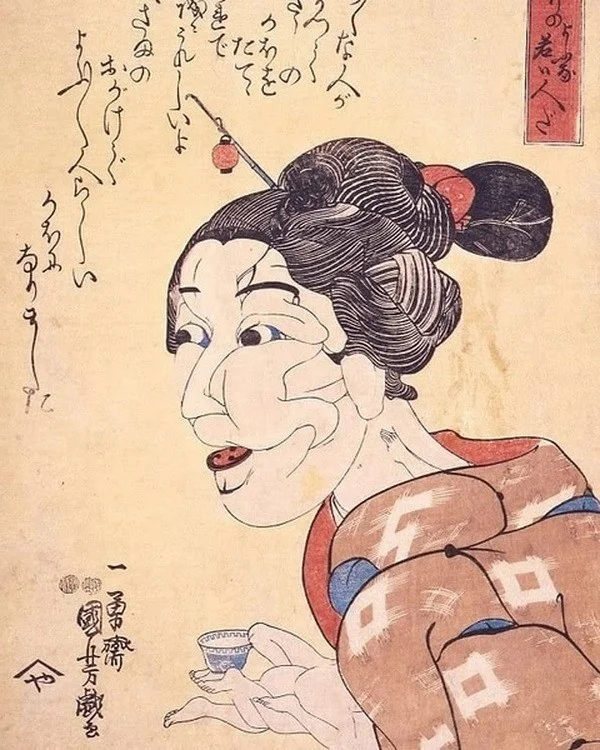

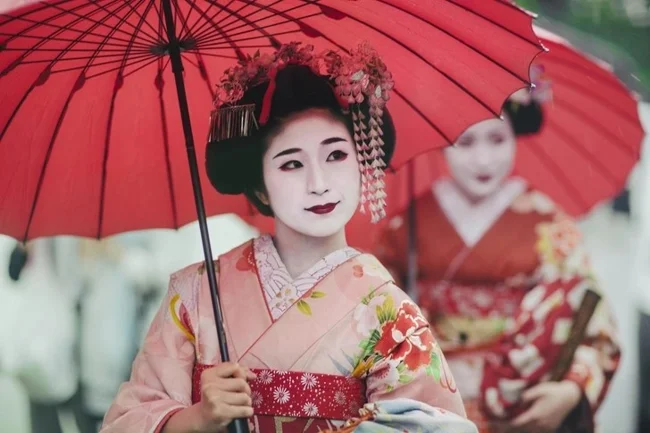
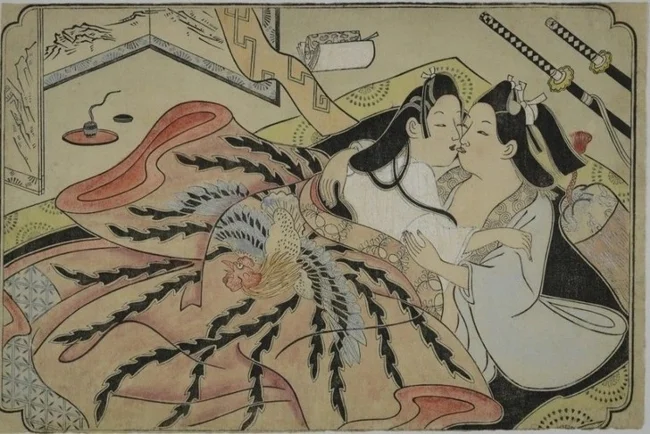
Modern Oiran 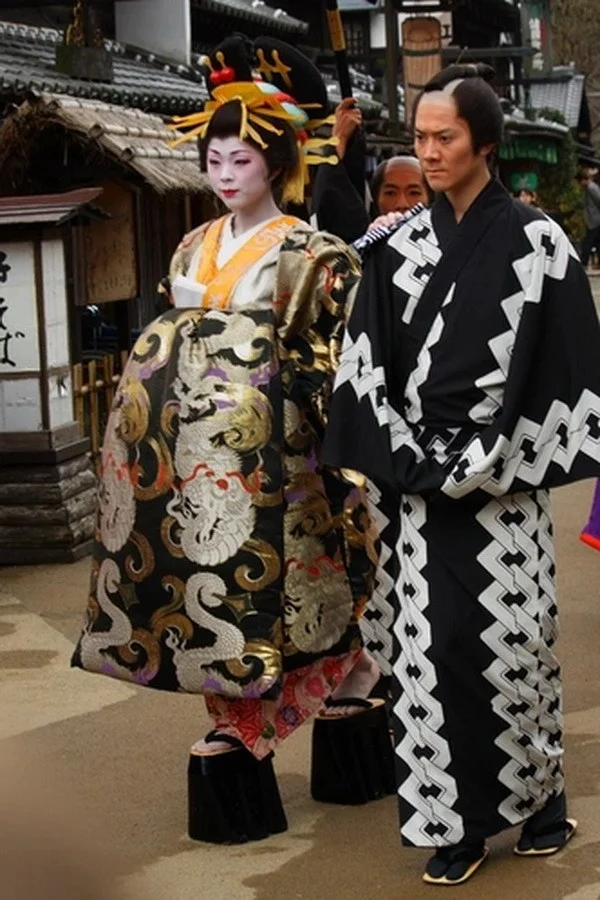
Hokusai. The Great Wave off Kanagawa 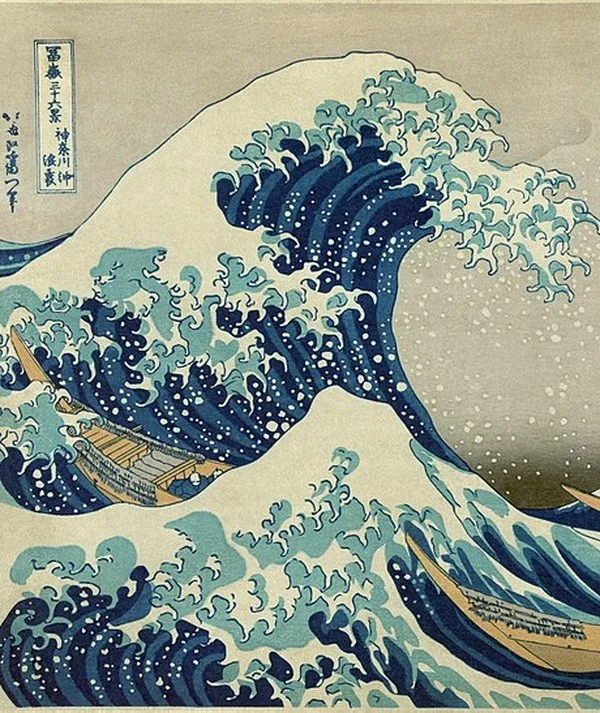
Hokusai. The Dream of the Fisherman's Wife. Detail 